Rosa Louise McCauley Parks / The Bus Stop Historical Marker
Introduction
Text-to-speech Audio
This historical marker was dedicated in 2008 and marks the location where Rosa Parks boarded a Montgomery bus on December 1, 1955. On that day, Rosa Parks was arrested for refusing to give her seat to a white passenger. A secretary of the Montgomery National Association for the Advancement of Colored People (NAACP) with a long history of defending the civil rights of Black women in previous years, Parks was a highly regarded member of the Black Montgomery community. Although she was not the first Black woman in Montgomery to challenge segregation that year, news of her arrest led to a mass meeting that inspired Black citizens to boycott the city bus system the following week. When city leaders refused to work with local pastor Martin Luther King, Jr., the Black community launched a boycott that lasted 381 days. Thanks to the economic power of the Black community and a successful court challenge, the Montgomery Bus Boycott ended segregation in Montgomery. In retrospect, the bus boycott also served as a model of successful activism through non-violent strategies of resistance. It is important to note that Rosa Parks was a seasoned civil rights activist at the time of her arrest, and her leadership inspired a young Martin Luther King Jr. She remained active and is sometimes referred to as the “Mother of the Civil Rights Movement.”
Images
Photograph of Rosa Parks with Dr. Martin Luther King jr. (ca. 1955) Mrs. Rosa Parks altered the negro progress in Montgomery, Alabama, 1955, by the bus boycott she began.
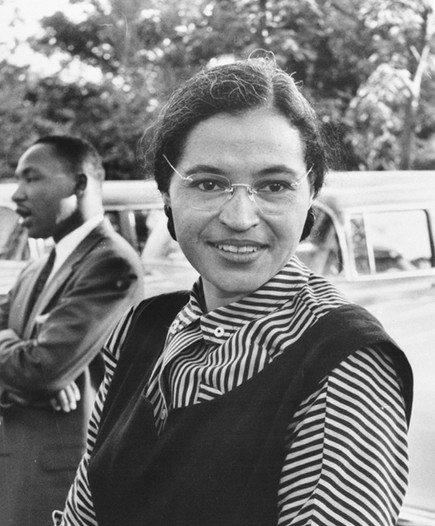
This historical marker commemorates the spot where Rosa Parks boarded the bus, which would become one of the most important events in United States history.

Parks being fingerprinted by Lieutenant D.H. Lackey on February 22, 1956, when she was arrested again, along with 73 other people, after a grand jury indicted 113 African Americans for organizing the Montgomery bus boycott
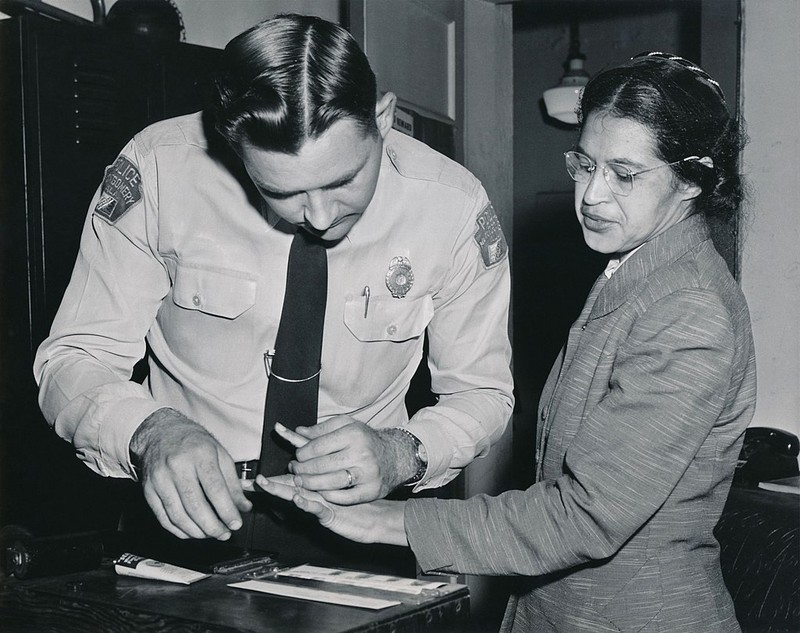
Police report of the arrest of Rosa Parks, Montgomery, Alabama, December 1, 1955.
.jpg)
Finger print card of Rosa Parks made following her arrest December 1, 1955.
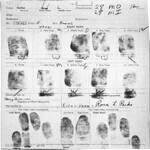
Fred Gray was the attorney who represented Rosa Parks and others who filed a federal court suit opposing segregation laws. He was indicted for his work on the case, circa 1956
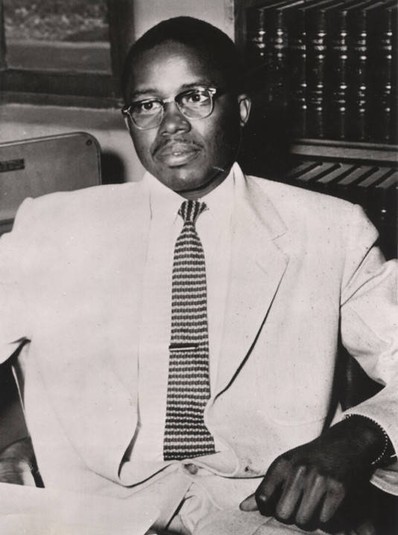
Viriginia Durr and Rosa Parks, circa 1980s
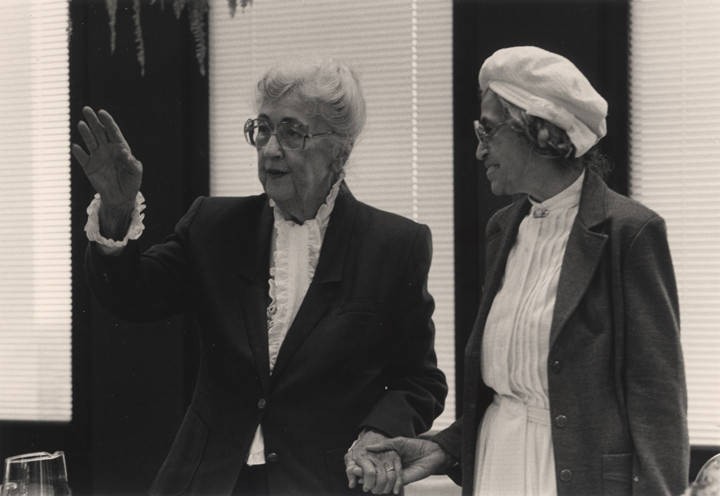
Backstory and Context
Text-to-speech Audio
Rosa Louise McCauley Parks was born on February 4, 1913, in Tuskegee, Alabama to James McCauley and Leona Edwards McCauley. She attended high school at the Alabama State Teachers College Laboratory High School. In 1932 she married Raymond Parks, a barber at the Maxwell Air Force Base and a charter member of the local National Association for the Advancement of Colored People (NAACP) branch in Montgomery, AL The couple were active in voting rights campaigns in Montgomery and organized efforts to free the Scottsboro Boys in the 1930s. In 1944, Parks investigated the rape of Recy Taylor, a 24-year African American mother and sharecropper as she walked home from church in Abbeville, Alabama. Mrs. Parks managed the office of the Brotherhood of Sleeping Car Porters and the local NAACP chapter under E.D. Nixon during the 1940s and 1950s. Rosa Parks later became the secretary of the Montgomery chapter. In August 1955, Parks attended the desegregation workshop at the Highlander Folk School, an interracial training center for labor and civil rights activists in Appalachian Tennessee.[1]
On December 1, 1955, her civil rights background coupled with her tiredness of racial segregation, led Rosa Park to not vacate her seat for a white male passenger. She was arrested by city police for disorderly conduct. E. D. Nixon and white civil rights activists Clifford and Virginia Durr bailed Parks out of jail. When her case went to trial in the Recorder's Court, the court found her guilty and ordered her to pay a fine of $14, including court costs. The Women's Political Council, led by an English professor, Jo Ann Robinson, used her case to call upon Black residents to not ride city buses in protest. Parks remained active in the boycott as the protest became thirteen months long. Her involvement led to death threats, the loss of her job at the Montgomery Fair department store, and poverty. Though the family relocated to Detroit, Michigan in 1957 due to the hostile treatment, Rosa Parks continued to fight for civil and human rights until her death in 2005.[2]
Sources
[1] Lee Hattabaugh. “Rosa Louise McCauley Parks / The Bus Stop”. HMdb.org. The Historical Marker Database. 4 October 2010. https://www.hmdb.org/m.asp?m=36503.
[1] Danielle L McGuire, At the Dark End of the Street: Black Women, Rape, and Resistance--A New History of the Civil Rights Movement from Rosa Parks to the Rise of Black Power (New York: Alfred A. Knopf, 2010), xviii.
[1] Rosa Parks: In Her Own Words. Washington, D.C.: Library of Congress, 2019. https://www.loc.gov/exhibitions/rosa-parks-in-her-own-words/about-this-exhibition/.
[2] Jo Ann Robinson and David J. Garrow. The Montgomery Bus Boycott and the Women Who Started It: The Memoir of Jo Ann Gibson Robinson (Knoxville: University of Tennessee Press, 1987), 18.
National Archives and Records Administration (NARA)
Image via Lee Hattabaugh, 2010
The Plain Dealer (Cleveland, Ohio)
National Archives and Records Administration (NARA)
National Archives and Records Administration (NARA)
Alabama Department of Archives and History
Alabama Department of Archives and History
